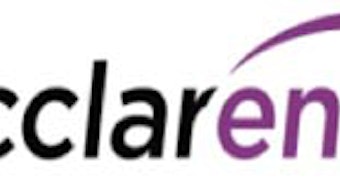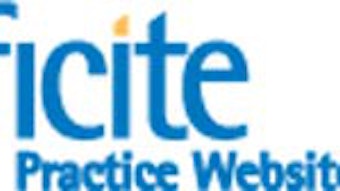Coding Edits: A Review of How to Decipher NCCI & MUEs and How Your Academy Is Involved in Advocacy for Appropriate Edits
Udo Kaja Program Manager, Payer Advocacy Your Medicare and/or Medicaid contractor or private payer may have denied payment for a procedure you performed on the same patient and same date of service as another procedure because of prepayment claims systems processing edits. These automated prepayment edits allow payers to scrutinize your submitted claims to determine whether separate reimbursement is warranted for certain combinations of services you perform on each patient per day. It is important that you are aware how these edits function so you may avoid unnecessary denials and help to optimize your billing operations. The Centers for Medicare and Medicaid Services (CMS) developed the National Correct Coding Initiative (NCCI) to eliminate improper coding for Medicare Part B claims. Although created by CMS, many private payers and Medicaid providers have adopted NCCI edits within their claims processing systems. These edits are based on coding conventions defined by the American Medical Association’s CPT Coding Manual, analysis of current standards of coding practice, and input from specialty societies like your Academy. Medicare Claims processing contractors first adopted these edits for claims with dates of service on or after January 1, 1996. CMS updates these edits quarterly. There are two types of edits that fall under the NCCI: they are Column 1/Column 2 Correct Coding Edits (CCI) and Mutually Exclusive Edits (MEE). The CCI edits show code pairs that you should not report together when performed on the same day because one procedure is integral to the other. For example, if you removed impacted cerumen (69210) – column 2 on the same day as a tympanometry (92550) – column 1, the 69210 would be denied. (For Medicare patients, you may report the removal of the impacted cerumen with the HCPCS Level II G0268 code). MEE identifies code pairs that (for clinical reasons) are unlikely to be performed on the same patient on the same day. The MEEs and CCIs are arranged in two columns – columns 1 and 2. For the CCIs, column 1 represents the primary procedure (which is paid) while column 2 (denied service) represents the procedure which the column 1 code encompasses. For the MEEs, the column 2 code typically represents the procedure with the higher work Relative Value Unit (RVU) and will be denied when reported with the column 1 code. If you submit a code-pair that Medicare does not reimburse separately for, you are prohibited from asking the patient to sign an Advanced Beneficiary Notice (ABN) and/or a Notice of Exclusions from Medicare Benefits form to obtain payment. Associated with these NCCI edits are modifier indicators (0, 1, and 9). These modifiers will allow you to determine whether you may override the MEE and/or CCI so you may obtain separate payment for each service. If the code pair has a modifier indicator of “0”, you are barred from overriding the edit. If “1”, you may override the edit with an appropriate modifier. An indicator of “9” signals the edits do not apply to the code pair. Another type of automated prepayment review edit is the Medically Unlikely Edit (MUE), which CMS established on January 1, 2007, to lower the Medicare Fee for Service paid claims error rate. Also updated quarterly, MUEs signify the maximum number of units for a CPT/HCPCS code you may report for each patient per day on your claims. CMS develops these edits from anatomic considerations, HCPCS/CPT code descriptors, CPT coding instructions, established CMS policies, nature of service/procedure, nature of equipment and clinical judgment. The agency validates these edits against 100 percent submitted claims data within a 6-month period. For CPT/HCPCS codes you submit that have MUEs, your payer’s claims system would review the claim to ensure you did not exceed the number of units of service allowed per day. If you did, the payer would automatically deny the line item on your claim. CMS publishes most MUE values on its website. For those MUEs that are unpublished, the Academy Health Policy Team as well as your Medicare contractor can disclose to you a typical range of units you may bill for the service or procedure. In addition, Medicaid plans have been mandated to incorporate the CCIs and MUEs as of October 1, 2010. Academy’s Involvement in the Development and Review Process for CCIs and MUEs Generally, when CMS proposes new CCI and MUE edits, the agency offers your Academy the opportunity to review and ensure they reflect current coding guidance and medical practice. First, the Health Policy Team reviews the proposed edits to check whether there are any that affect CPT/HCPCS codes typically performed by otolaryngologist – head and neck surgeons. After compiling proposed edits relevant to the specialty, the Physician Payment Policy workgroup (3P) thoroughly reviews them to determine whether they are appropriate. If 3P disagrees with any edits, they will provide solid medical rationale in support of their position. The Academy has been successful with many of the disagreements with CMS on the proposed changes to NCCI edits. For example, last year we disagreed with the CMS decision to bundle the middle ear exploration code (69440) and tympanic membrane procedures (69420, 69421, 69424, 69433, 69436, 69610, and 69620) into otologic procedures performed by a transcanal or endaural approach. Due to our advocacy, CMS decided not implement these edits. The whole process of reviewing proposed edits may take up to a month. Another important aspect of reviewing the proposed MUEs and NCCI edits is to prepare you for any changes that may affect the way you report certain procedures. This is done by developing coding guidance on appropriate coding for procedures performed primarily by otolaryngologist – head and neck surgeons. Visit our website to view all our coding guidance, http://www.entnet.org/Practice/cptENT.cfm. How to Access the NCCI and MUE edits You may download a list of all the current CCIs on the Medicare website at https://www.cms.gov/nationalcorrectcodinited/ncciep/list.asp. They are arranged by service type and code range, so you may easily select which particular range of codes you need and download. The most recent MUEs are also available on the Medicare website at https://www.cms.gov/NationalCorrectCodInitEd/08_MUE.asp#TopOfPage (you will want to download the “Practitioner Services MUE Table” file). The most current versions for both edits became effective on October 1, 2011.
Udo Kaja Program Manager, Payer Advocacy

The Centers for Medicare and Medicaid Services (CMS) developed the National Correct Coding Initiative (NCCI) to eliminate improper coding for Medicare Part B claims. Although created by CMS, many private payers and Medicaid providers have adopted NCCI edits within their claims processing systems. These edits are based on coding conventions defined by the American Medical Association’s CPT Coding Manual, analysis of current standards of coding practice, and input from specialty societies like your Academy. Medicare Claims processing contractors first adopted these edits for claims with dates of service on or after January 1, 1996. CMS updates these edits quarterly.
There are two types of edits that fall under the NCCI: they are Column 1/Column 2 Correct Coding Edits (CCI) and Mutually Exclusive Edits (MEE). The CCI edits show code pairs that you should not report together when performed on the same day because one procedure is integral to the other. For example, if you removed impacted cerumen (69210) – column 2 on the same day as a tympanometry (92550) – column 1, the 69210 would be denied. (For Medicare patients, you may report the removal of the impacted cerumen with the HCPCS Level II G0268 code). MEE identifies code pairs that (for clinical reasons) are unlikely to be performed on the same patient on the same day. The MEEs and CCIs are arranged in two columns – columns 1 and 2. For the CCIs, column 1 represents the primary procedure (which is paid) while column 2 (denied service) represents the procedure which the column 1 code encompasses. For the MEEs, the column 2 code typically represents the procedure with the higher work Relative Value Unit (RVU) and will be denied when reported with the column 1 code. If you submit a code-pair that Medicare does not reimburse separately for, you are prohibited from asking the patient to sign an Advanced Beneficiary Notice (ABN) and/or a Notice of Exclusions from Medicare Benefits form to obtain payment.
Associated with these NCCI edits are modifier indicators (0, 1, and 9). These modifiers will allow you to determine whether you may override the MEE and/or CCI so you may obtain separate payment for each service. If the code pair has a modifier indicator of “0”, you are barred from overriding the edit. If “1”, you may override the edit with an appropriate modifier. An indicator of “9” signals the edits do not apply to the code pair.
Another type of automated prepayment review edit is the Medically Unlikely Edit (MUE), which CMS established on January 1, 2007, to lower the Medicare Fee for Service paid claims error rate. Also updated quarterly, MUEs signify the maximum number of units for a CPT/HCPCS code you may report for each patient per day on your claims. CMS develops these edits from anatomic considerations, HCPCS/CPT code descriptors, CPT coding instructions, established CMS policies, nature of service/procedure, nature of equipment and clinical judgment. The agency validates these edits against 100 percent submitted claims data within a 6-month period. For CPT/HCPCS codes you submit that have MUEs, your payer’s claims system would review the claim to ensure you did not exceed the number of units of service allowed per day. If you did, the payer would automatically deny the line item on your claim. CMS publishes most MUE values on its website. For those MUEs that are unpublished, the Academy Health Policy Team as well as your Medicare contractor can disclose to you a typical range of units you may bill for the service or procedure. In addition, Medicaid plans have been mandated to incorporate the CCIs and MUEs as of October 1, 2010.
Academy’s Involvement in the Development and Review Process for CCIs and MUEs
Generally, when CMS proposes new CCI and MUE edits, the agency offers your Academy the opportunity to review and ensure they reflect current coding guidance and medical practice. First, the Health Policy Team reviews the proposed edits to check whether there are any that affect CPT/HCPCS codes typically performed by otolaryngologist – head and neck surgeons. After compiling proposed edits relevant to the specialty, the Physician Payment Policy workgroup (3P) thoroughly reviews them to determine whether they are appropriate. If 3P disagrees with any edits, they will provide solid medical rationale in support of their position. The Academy has been successful with many of the disagreements with CMS on the proposed changes to NCCI edits. For example, last year we disagreed with the CMS decision to bundle the middle ear exploration code (69440) and tympanic membrane procedures (69420, 69421, 69424, 69433, 69436, 69610, and 69620) into otologic procedures performed by a transcanal or endaural approach. Due to our advocacy, CMS decided not implement these edits. The whole process of reviewing proposed edits may take up to a month. Another important aspect of reviewing the proposed MUEs and NCCI edits is to prepare you for any changes that may affect the way you report certain procedures. This is done by developing coding guidance on appropriate coding for procedures performed primarily by otolaryngologist – head and neck surgeons. Visit our website to view all our coding guidance, http://www.entnet.org/Practice/cptENT.cfm.
How to Access the NCCI and MUE edits
You may download a list of all the current CCIs on the Medicare website at https://www.cms.gov/nationalcorrectcodinited/ncciep/list.asp. They are arranged by service type and code range, so you may easily select which particular range of codes you need and download.
The most recent MUEs are also available on the Medicare website at https://www.cms.gov/NationalCorrectCodInitEd/08_MUE.asp#TopOfPage (you will want to download the “Practitioner Services MUE Table” file). The most current versions for both edits became effective on October 1, 2011.













